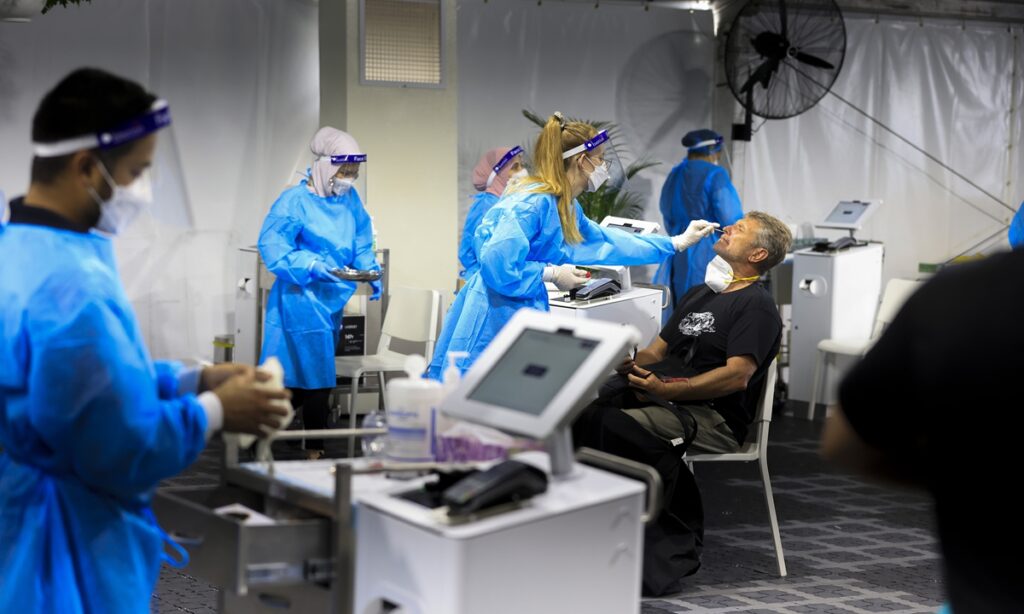Australia on Thursday reported its biggest pandemic caseload with a runaway Omicron outbreak driving up hospitalization rates as the surge put severe strain on supply chains forcing authorities to ease quarantine rules for more workers.
After successfully containing the virus earlier in the pandemic, Australia has reported nearly a million cases over the last two weeks as people slowly get adjusted to living with the coronavirus amid fewer restrictions. Total infections detected since the pandemic began neared 1.4 million.
More than 147,000 new cases have been recorded so far on Thursday in Australia, with about 92,000 in the most populous state of New South Wales (NSW), although that includes a backlog of positive at-home results dating back to the beginning of January.
Net new hospital admissions and people admitted to intensive care are at their highest in the pandemic but authorities have said the health systems can cope with the rising cases.
A total of 53 new deaths have been reported so far, with NSW suffering its deadliest day of the pandemic with 22 deaths. But the death rate during the Omicron wave is lower than prior outbreaks in Australia, where more than 92 percent of people above 16 are double-dosed and a booster drive is ramping up.
Amid pressure on supply chains, Victorian state authorities on Thursday exempted more workers from quarantine requirements for being close contacts. Staff in emergency services, education and transport can go back to work if they are symptom-free.
“There is no quick fix to this,” Victoria Premier Daniel Andrews said during a media conference on Thursday.
A man receives a COVID-19 test at the Histopath pre-departure clinic at Sydney International Airport in Sydney, Australia on December 23, 2021. Demand at COVID-19 testing centers across Sydney has increased in the lead-up to Christmas as New South Wales’ coronavirus case numbers rise. Photo: AFP




